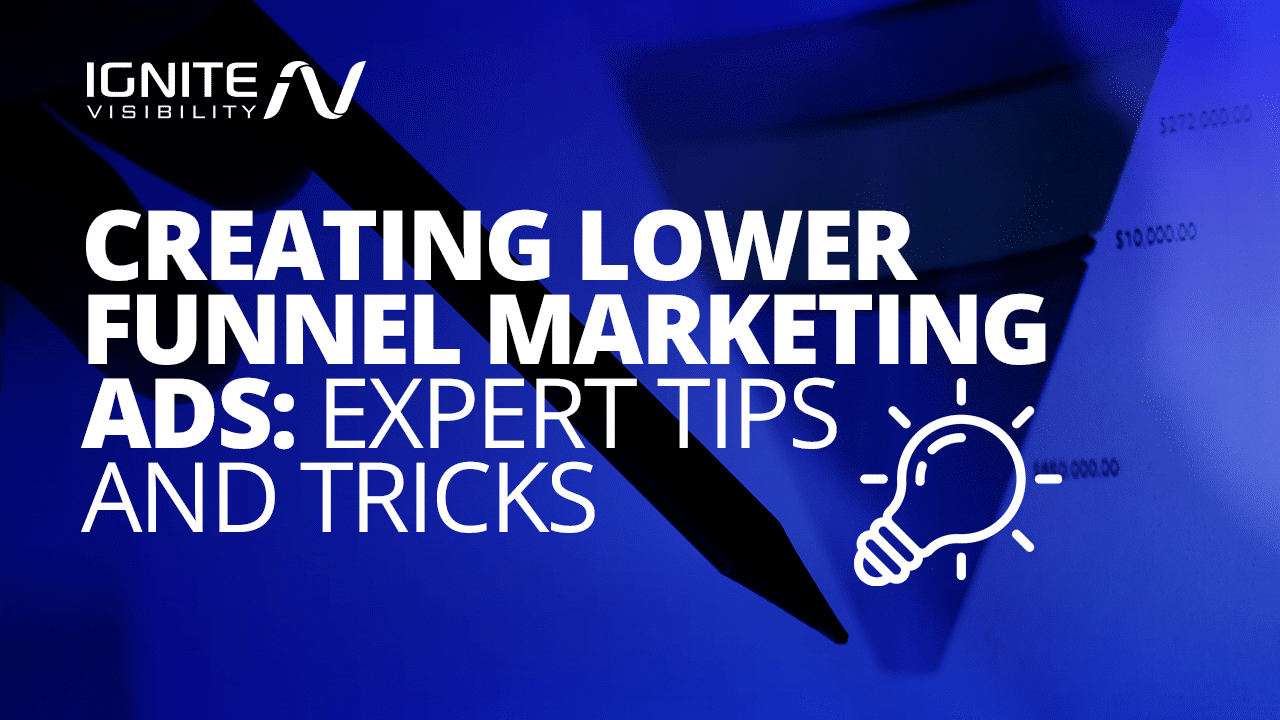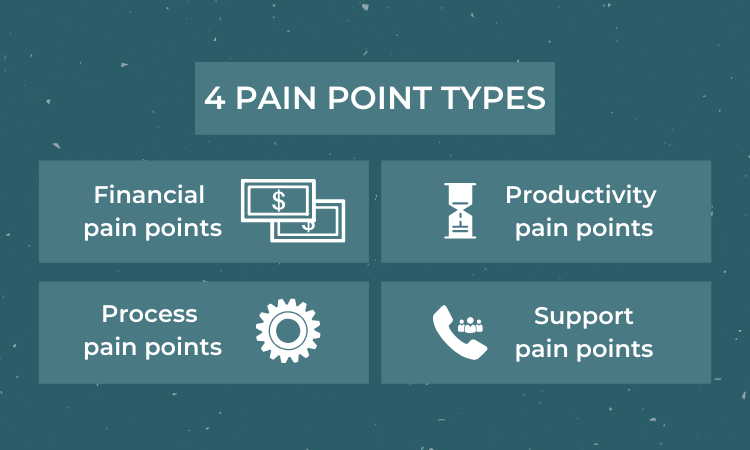
A solid advertising strategy is a great way to reach customers at every stage of the buyer journey. By using the right copy, creative, and offers, you can place the most relevant messages in front of prospects at pivotal moments.
The ultimate goal is to propel customers down the funnel. They should move from a general awareness stage (top of funnel) to a point of decision. These potential customers are primed and ready to make a move. Your responsibility is to help flip the switch.
If you want to learn how to get the right ads in front of the right audiences, we can help. In this post, we’ll provide a crash course in lower funnel marketing ads. You’ll learn the definitions and logistics while also highlighting best practices for successful campaigns.
What Are Lower Funnel Marketing Ads?
Lower funnel marketing ads are action-oriented spots that are all about a conversion. Prospective or current customers may receive them, depending on your tactics and targeting criteria.
They are at the bottom of the buyer’s journey, following:
- Awareness: Buyers begin their journey here, becoming aware of their problem and initially researching based on pain points. Value-driven informational content applies here.
- Consideration: Customers shift from basic research and are engaging with brands. They are comparing solutions. Ads in this funnel stage would spotlight unique brand qualities.
- Conversion: The buyer is ready to decide, and the ad messaging focuses on the conversion point, whether making a purchase or requesting a consultation.

The AIDA Buyer’s Journey
Why Are Lower Funnel Marketing Ads Important? Who Should Use Them?
For lower funnel advertising, marketers must remember the importance of pushing customers over the proverbial edge. If the customer knows about the brand, how do you give them value? Lower funnel ads should answer this question.
These tactics result in leads or purchases, so you can attribute them to revenue. They also provide a unique chance to deliver promotions and offers that give prospects the nudge they need.
All industries should use bottom-of-the-funnel marketing ads. We tend to think of these as ads for ecommerce brands with an offer to make a purchase. Those are common and effective. However, every company has conversions to hit.
When these bottom-funnel ads, your audience already knows who you are and their problem. Ads should reflect this with a tone that is part persuasive and part personal. You’ve nurtured the relationship throughout the advertising funnel. Now, it’s time to speak to and incentivize them to act.
Top Tactics to Use When Producing Lower Funnel Marketing Ads
To maximize your lower funnel ad results, we’ve rounded up tactics based on the best industry standards and marketing expertise. You can use these tips and tools right away to better reach buyers who are ready to make the leap.
Discounts
Discounts are very attractive, and most people use them. In fact, 88% of U.S. consumers use them. You can offer a percentage off or dollar discount, redeemable online or in-store.
They “reward” customers for purchasing and can also foster loyalty.
Incorporate discounts into your bottom-of-funnel ads. Deals work well for customers who have been in the process for a long time. They give customers the gentle nudge or incentive they need before deciding.
Seasonal Offers
Seasons offer a prime time to get in front of people making purchases. It can be formal holidays, general shopping times, or when buyers are finalizing budgets. Capitalize on these moments with bottom-of-funnel marketing.
When creating lower funnel marketing ads, remember that people get many seasonal offers. You’ll need to stand out with your messaging and offer. Season-based lower funnel ads can be effective for every type of business.
Free Trials & Demos
The next tactic uses lower funnel ads to prompt people to start a free trial or request a demo. They apply to software, technology, and services. Because they are common, you’ll need to be creative.
Some ideas for free trial campaigns include highlighting features, making it a limited-time offer, and adding that no payment is necessary.
For demo bottom-funnel ads, get people to click by framing the demo as quick and customized. In this way, you set expectations and counter concerns about time and relevance.
Personalization
There are two aspects to customer personalization: product and location.
Within your data, you can determine the product or service customers are considering. As a result, you can deliver more personalized ads. People appreciate personalization, with 66% of business buyers and 62% of consumers stating such in a survey.
When a company can personalize, it’s possible to retarget at a discount, incentivizing the customer to leap.
Location is also important to personalization. Where buyers are matters. It informs what products or services they need. Additionally, the locality is crucial for events you’re hosting, as you’d target geo areas.
Urgency and Frequency
Urgency and frequency get people to act. Limited-time deals mean they need to click now to receive it.
Urgent messages should target lower-funnel customers continually. If lower funnel ads are visible only once, having the impact you crave to move the needle forward is not as easy.
Remarketing
Making lower funnel marketing ads via remarketing is another top tactic. These people have already been to your website. These ads show up on other digital channels to get the person back to your website with a tempting offer.
Cart Abandonment
The average cart abandonment rate is around 70%, according to an analysis of studies. People do so for many reasons—unexpected costs, having to create an account or a complicated checkout.
If you have data on why customers do this, it will help you tailor these ads. Many times, they offer an additional discount or free shipping. It’s an opportunity to use personalization to get customers back to your site and ready to purchase.
Product Comparison
Customers are usually considering at least two brands when looking for a solution. Creating product comparison lower funnel marketing ads can tip the scales in your favor. Using statistics here would be impactful, such as customer satisfaction and retention. Highlight what your product does better and highlight your competition’s weaknesses.
Build a Strategy Behind Your Lower Funnel Marketing Ads
When considering how to create lower funnel marketing ads, it begins with a strategy. Having a documented customer journey and being able to track engagements with your brand is essential. With these two things, you can understand where people are in the sales funnel and what motivates them to convert.
Here are the steps to take in developing your strategy.
Step 1: Identify Biggest Customer Objections
Look at your data and work with salespeople to define objections causing conversion hesitation. These will be crucial in the messaging you create and any offers.
Common issues include price, time to get started, initial investment, or any other objection. Get clear about your customer’s pain points before you create new ads.

Customer Pain Points
Step 2: Understand Why Your Customer Decided to Reach Out in the First Place
If a customer is at the bottom of the funnel, you should know how they got there. Lean on your buyer persona frameworks and data to conclude why this prospect needs your product or service.
Step 3: What Data Can You Attribute to Ads?
Next, you’ll want to look at current ad performance by funnel stage. Are there particular campaigns that had high performance? What can you learn from this as you build new ones?
Leverage a “database map” to pinpoint specifics. Then, work on becoming proficient at studying your consumer data related to advertising. Make sure to gather quality metrics around your data and use lead scoring to grade prospects.
Step 4: Assess What You Can Offer
Finally, the offer has to be compelling based on what you learned from the previous steps. It should incentivize and motivate them based on what matters to them most.
Breaking It Down: Start Building Your Lower-Funnel Ads
In creating lower funnel marketing ads, there are four key components:
Copy – Should be on-brand, enticing, and clear. Being short and to the point drives responses.
Creative – Use imagery and graphics representing your brand and buyers for a lasting impression.
Offer – Think critically about the offer based on what you know about your customers and how it will help you reach your goals. The push needs to solve the buyer’s problem.
Call to Action (CTA) – Ensure CTAs are concise and straightforward. Don’t leave people guessing! When they know what they are clicking for, they will be less hesitant.
Launch Your Lower-Funnel Ads
Where should lower-funnel ads be? Some examples of bottom-of-the-funnel marketing include paid search, programmatic display ads, OTT/CTV (over-the-top/connected TV), and social media.
In each of these tactics, you can target specific people as well as those who are like them. Let’s look closer at a few options.
Placement-Branded Search, CTV, etc.
Placement-branded search focuses on ads that run in search with keywords associated with your company name and product. Searchers have high intent when using these terms, so it makes sense to target them this way.
CTV and OTT are ads running within streaming. It’s a valuable channel with many eyes and unskippable formats, including demographic and location targeting capabilities.
Negative Keywords & Keyword Research
For paid search ads, you’ll need to consider negative keywords in your keyword research. Negative keywords are terms that prevent an ad from being triggered by a certain phrase. It helps weed out people that aren’t your ideal audience.
You’ll need to set up these ads with keywords most aligned with purchase intent.
Measurement
Measuring ads advises of their performance.
You want to understand your return on ad spend (ROAS). Be sure to make these ads attributable to conversions with the proper tracking. Look at click-through rate (CTR) and conversions on the landing page to discern.
Take what you learn and use it to improve performance.
FAQs
1. How do lower funnel ads differ from top and mid funnel ads?
Lower funnel ads focus on conversions directed at people who know your brand. Top- and mid-funnel ads are more informational, helping people learn about their problems and the value of your product or service.
2. How often should you refresh your lower funnel ad content?
You should do so at least quarterly. There may be many reasons to refresh them, such as new product launches, changes in the market, and learnings from previous campaigns.
3. Which platforms are best for displaying lower funnel marketing ads?
What platforms work best depends on where your ideal customers are. In general, paid search is at the top of the list. OTT/CTV, programmatic, and social media platforms can also be useful.
4. How to measure the success of your lower funnel marketing ads?
Set up tracking for metrics like CTR, cost per click (CCP), conversions, ROAS, and website traffic from ads. What your measure should align with your goals.
5. What mistakes should I avoid when creating bottom of funnel ads?
A few lower funnel ad “don’ts” include inappropriate or low-quality imagery, copy being too long, not having a clear CTA, being too pushy and salesy, and failing to be clear on value.
6. How does audience segmentation play into lower funnel marketing strategies?
Segmenting your audience is essential in all marketing. It enables personalization, which is key to better engagement. Grouping prospects by funnel stage helps you get the right message to them.
Drive Conversions With Your Lower Funnel Marketing Ads
As a digital marketer, converting customers is high on your list of priorities. After all, bottom-of-the-funnel marketing is where many of your marketing efforts shine.
Now that you know how to make lower funnel marketing, it’s time to create a plan and launch. Keep refining your strategy as you get more data and insights. Creating a personalized journey matters to customers and how they view your brand.
If you want to optimize funnel advertising, we can help. We support all the components needed for success.
Let’s talk about it and get your funnel moving.